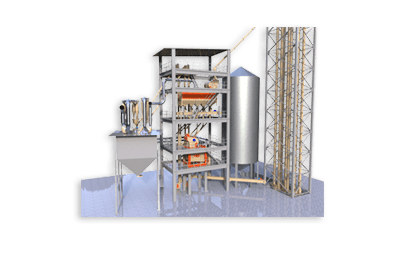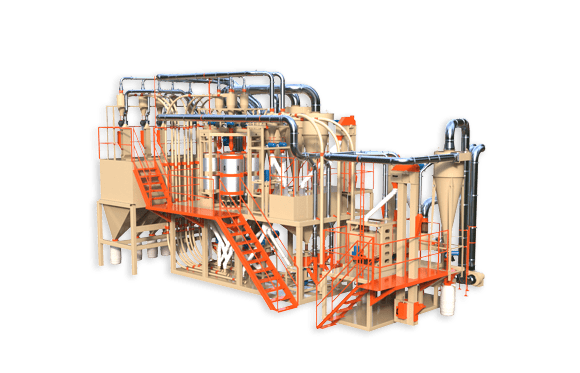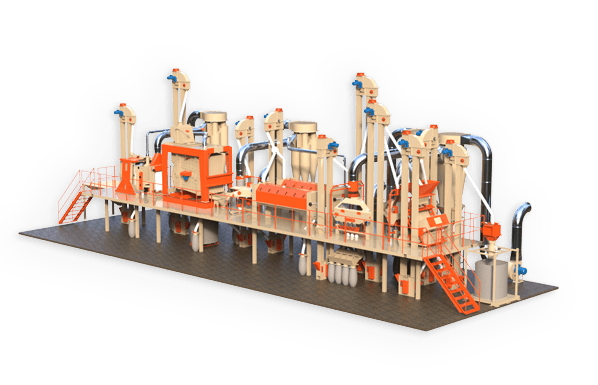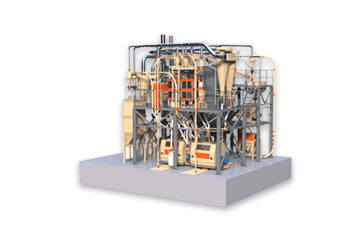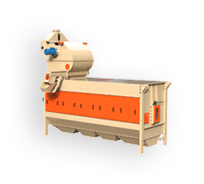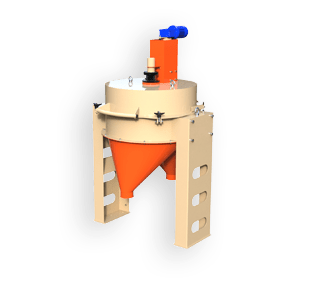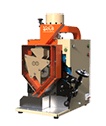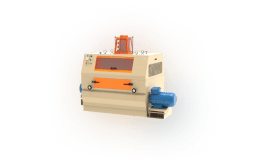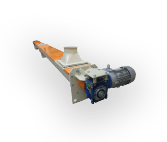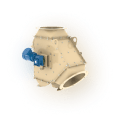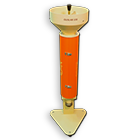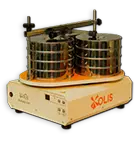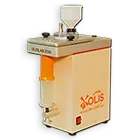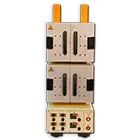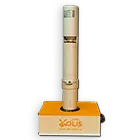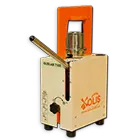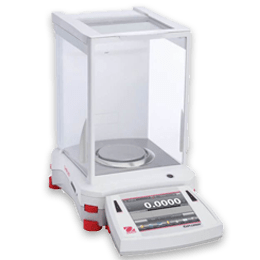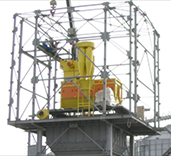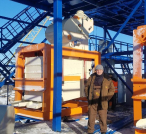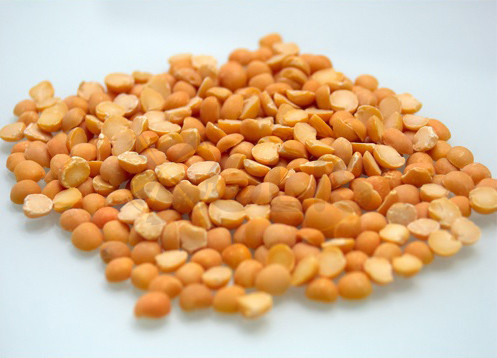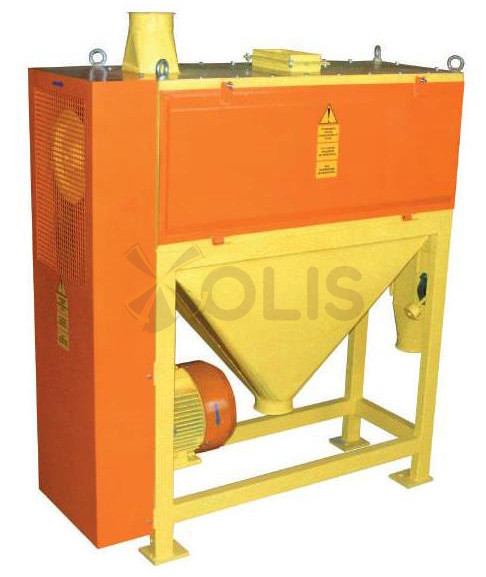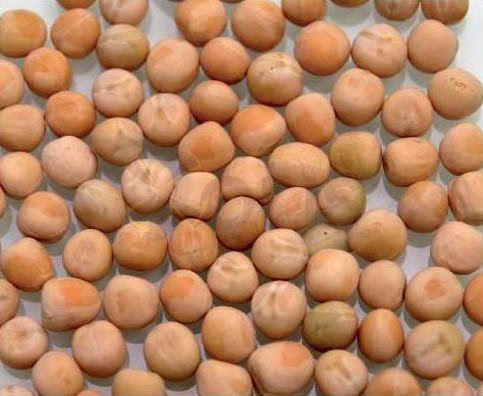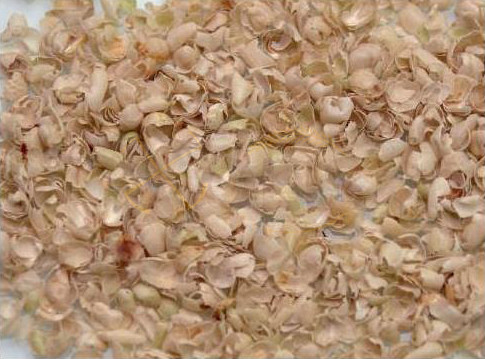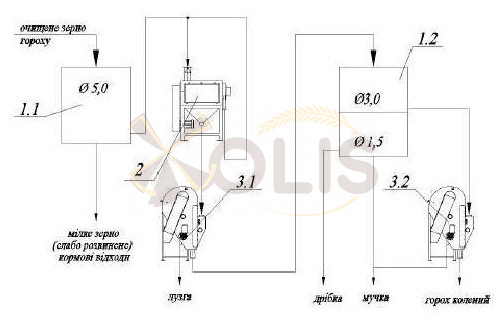Vereshchinsky A.P. – General Director of LLC “OLIS”, Doctor of Technical Sciences;
Shevchenko D.V. – Head of Development and Implementation Department of LLC “OLIS”
It is known that seed pods in pea grain make up 90-94% of its weight [1], but the actual yield of ground pea groats produced by traditional technology does not exceed 82-83% of the weight of cleaned grain. At the same time, the yield of crushed peas and flour is about 7-8%. Given the degree of use of pea grain in food, increasing the yield of groats is a promising direction for the development of technology of its processing.
Analyses of traditional pea groats production technology [1, 2] show that the formation of a significant amount of flour and crushed peas is caused by peeling-grinding operations, which are carried out in peeling-grinding machines.
Fig. 1. IWG machine for pea peeling and splitting into seed pods
The above mentioned machines realise the action of erasing by abrasive rotor, therefore crushing of the seedling of grain with formation of crushed peas and flour is a natural consequence of their work. Peas husked, especially individual seeds, has a damaged surface, so to improve the commercial appearance of groats, these products are polished. The polishing operation is also carried out in peeling and grinding machines, but at much “softer” modes. However, the consequence of such processing is also the separation of seed pod parts in the form of flour, which also leads to a reduction in groat yield.
Analysis of morphology and anatomy of pea grain, as well as traditional technology of its processing into groats allowed to justify the possibility of solving the problem of developing equipment and technology for the production of unground pea groats, realised without the use of peeling-grinding machines.
The result of design searches was the development of the MRG machine (Fig. 1) for pea husking and splitting it into seedlings. Structurally, the MRG machine is a horizontal rotor with whips and sieve cylinder with longitudinal brake bars. Openings of the sieve cylinder of rectangular shape, the long side of which is located perpendicular to its axis. Moving along the rotor under the action of scourers, pea grains experience shear and impact loads caused by interaction with scourers and brake bars. This interaction leads to intensive peeling of the pea grain and its crushing into seedlings. The formed seeds are immediately removed from the working area of the machine by sifting through the openings of the sieve cylinder. The grains that have not undergone grinding are removed from the sieve cylinder separately. It is revealed that for different batches of grain in order to obtain the best results it is necessary to establish certain force loads, which is performed by adjusting the rotor speed of the machine. At the same time, the increase in force loads does not lead to peeling of underdeveloped grains, which are usually part of the grain mass, and splitting them into seedpods. When a certain limit is reached, the destruction of such grains into pieces together with seed coats is observed. Taking into account the difference in the size of full-grown and underdeveloped grains before processing in the IWG machine, fractionation operation with separation of the fine fraction of grain from the processing is reasonable.
Figure 2. Pea grains
In addition, it was revealed that full pea grains (Fig. 2) in their mass are always characterised by strength to crushing on the seedpods and strength of shell attachment. Proceeding from this, the processing regimes, providing a minimum amount of crushing and flour formation, should provide for selective force impact on the grains, which differ in strength characteristics. This condition can be achieved by an appropriate technological scheme of processing, providing repeated processing of the convergent fraction of the machine. It should be noted that during processing in the MRG machine pea floral shells are separated with preservation of spherical shape (Fig. 3), have a low hanging speed and are effectively removed in aspirators of any design.
Fig. 3. Pea husk separated in the IWG machine
Fig. 4. Technological scheme of production of uncooked pea groats
l – sieve; 2 – MRG machine; 3 – aspirator
Based on the above research results, a technological scheme for the production of chopped peas (Fig. 4) was developed. Production approbation showed that the yield of groats from peas produced according to the above scheme is 3-4% higher than when using traditional technology. In appearance, the groats obtained differ significantly from the groats produced by traditional technology. The smooth, glossy surface of grains without traces of damage gives the groats an improved marketable appearance (Fig. 5).
Picture 5. Unground chopped peas
Thereby, according to the results of the work a new technology of pea grain processing into groats, technological scheme and equipment for its realisation are recommended. Two models of MRG machine with productivity up to 1.5 and 3 tonnes/hour have been developed and put into production. (www.olis.com.ua). Implementation of the above technology allows to significantly increase the yield of pea groats, as well as to produce a new type of groats – peas pounded uncut.
LITERATURE
- Kroshko G.D. Rules of organisation and conduct of technological process at large’yanichnyh plants [Text]/G.D. Kroshko [and others]. – K.: “Vipol”, 1998. – 145 p.
- Shutenko Є.І. Technologiya krup’yanogo vroobniztva [Text] / Є. І. Shutenko, S.M. Sots. – K.: “Osvita Ukrainy”, 2010. – 272 p.


